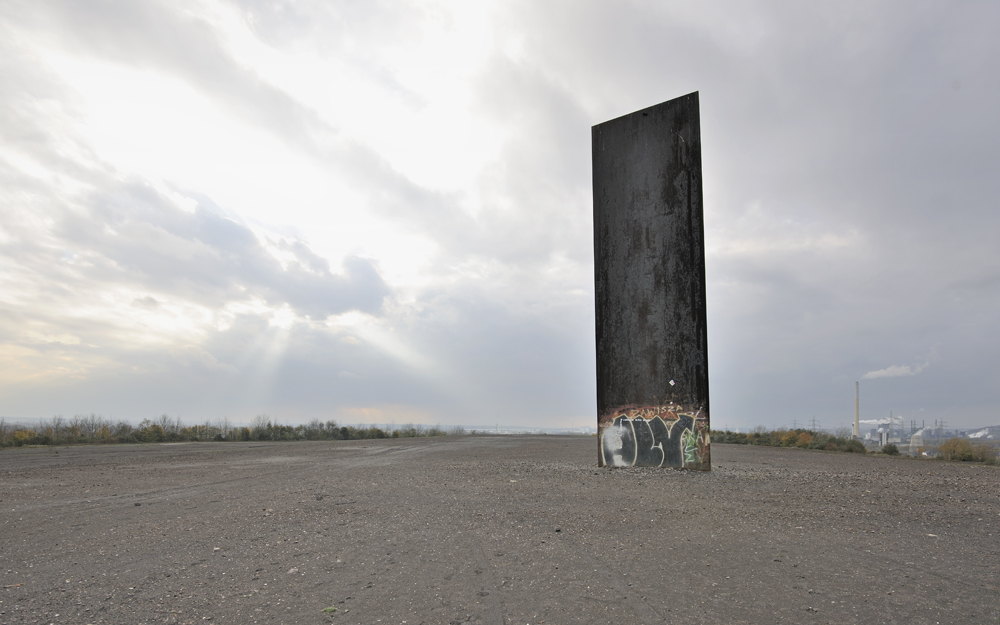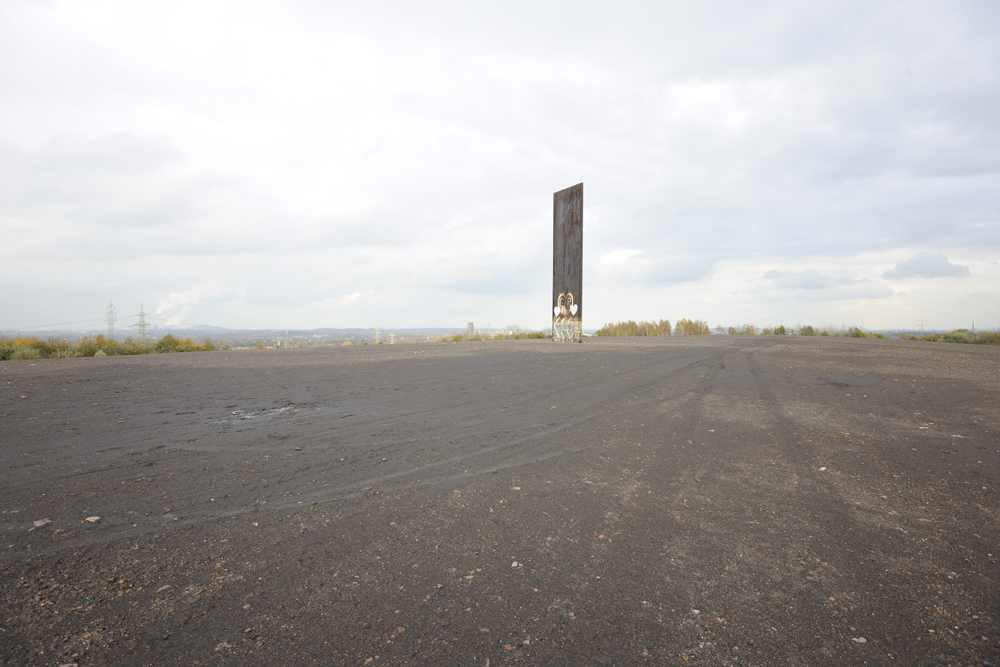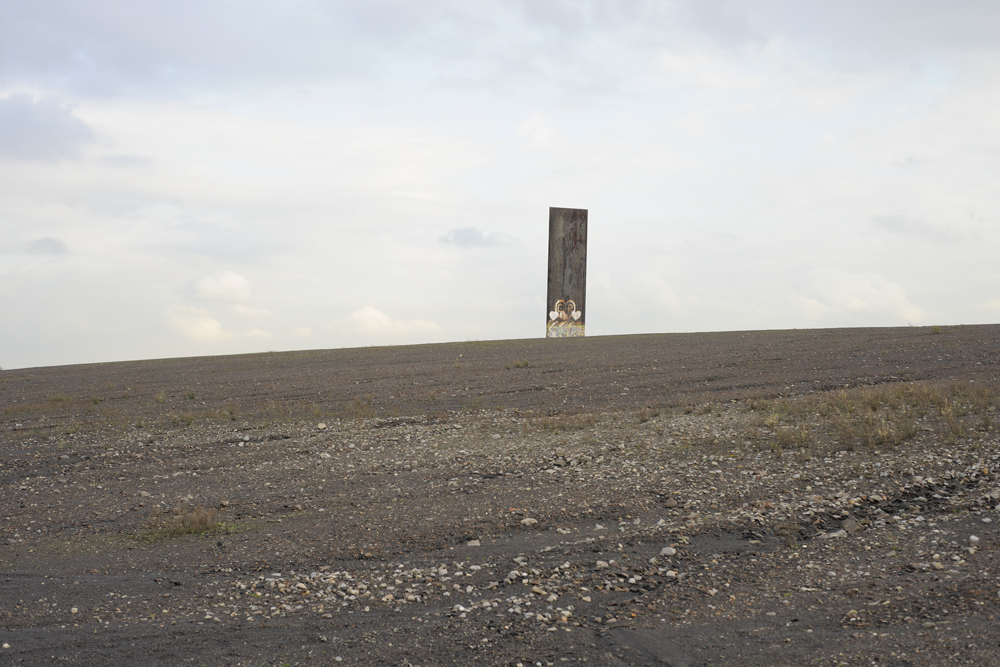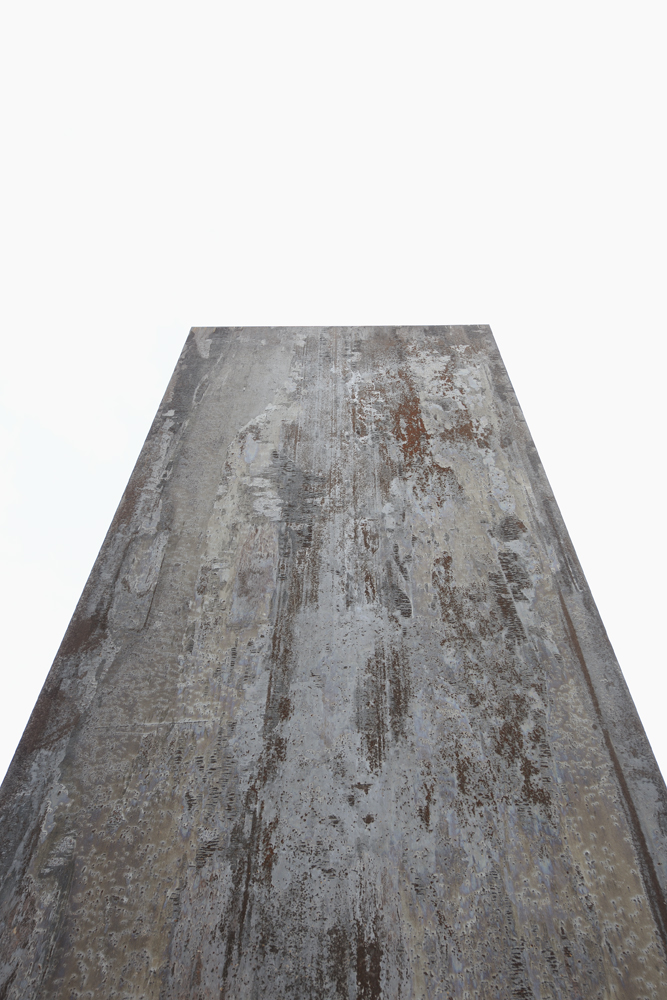Slab for the Ruhr





With his Slab, Richard Serra created one of the Ruhrgebiet’s most famous landmarks. The sculpture is situated atop the Schurenbachhalde, a former mining waste heap that is roughly 50 meters high and located in the Altenesse district in Essen. The heap was named after the “Schurenbach,” a stream that has been buried beneath it since the 1970s. In 1995, the 65-meter Schurenbachhalde was converted into a landscaped structure as part of the IBA-Emscherpark project. Serra’s concept was chosen for the heap in 1998 after a design competition initiated by the RuhrTriennale.
The artist drew ideas from the existing landscape when designing this work. He had an elliptical plane installed at the highest point of the heap, which was covered with excavated material, creating a setting reminiscent of an inhospitable lunar landscape. This peak offers a spectacular panoramic view of the Ruhrgebiet. The heap is flanked by green areas with hiking trails that enable visitors to ascend to the top.
In steel processing terms, a “slab” is a rectangular block of cast steel, aluminum, or copper that is exponentially longer and wider than it is thick. Slabs are typically poured as starting material for metal sheets and strips. The Slab for the Ruhr is a rolled steel plate that is 14.5 meters high and embedded 13.5 meters into the ground. The broad sides face east and west directly, and it has a slope of 3°. The slab was made in France by the company Creusot-Loire-Industries because there was no facility in the Ruhrgebeit capable of producing something of that size at the time. The gentle slant of the steel plate is barely discernible to the naked eye; however, it gives the sculpture a sinking effect, figuratively rooting it straight into the Ruhrgebiet’s past.
The rough, industrial quality of the material also embodies the essence of this region with its raw beauty. Richard Serra described his concept in 1997: “The sculpture’s meaning arises from its social and geographical context. Its stele-like shape allows a variety of readings, the most apparent and obvious of which is to see the sculpture as a symbol for the Ruhrgebiet and its coal and steel industry. The sculpture places viewers in the social reality of the location and demands that they become aware of the history of the region.”
The Slab for the Ruhr is part of the Route der Industriekultur.
Reference: de.wikipedia.org/wiki/Schurenbachhalde
Richard Serra
← Zur Startseite
Essen-Altenessen, Schurenbachhalde



